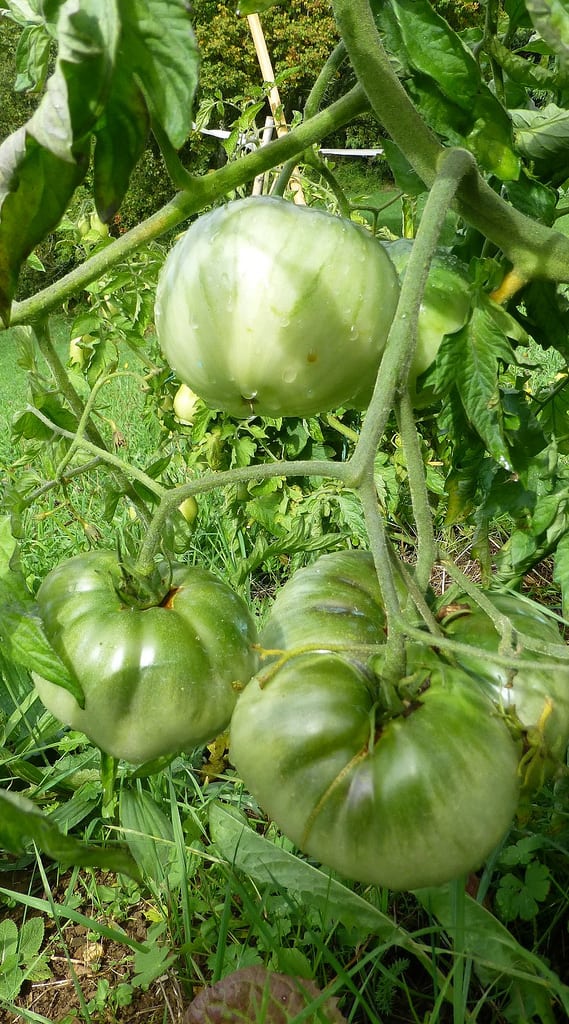Aunt Ruby’s Tomatoes: Growing Aunt Ruby’s German Green Tomatoes In The Garden


Heirloom tomatoes are more popular than ever, with gardeners and tomato lovers alike looking to discover a hidden, cool variety. For something really unique, try growing an Aunt Ruby’s German green tomato plant. The large, beefsteak-style tomatoes it grows are great for slicing and eating fresh.
What are German Green Tomatoes?
This is a truly unique heirloom tomato that is green when ripe, although it will develop a blush color as it softens further. The variety came from Germany but was cultivated in the U.S. by Ruby Arnold in Tennessee. Her relatives always called it Aunt Ruby’s tomato, and the name stuck. Aunt Ruby’s tomatoes are large, growing up to a pound (453 grams) or even more. The flavor is sweet with a slight hint of spiciness. They are perfect for slicing and eating raw and fresh. The fruits are ready 80 to 85 days from transplanting.
Growing Aunt Ruby’s German Green Tomatoes
Seeds for Aunt Ruby’s tomatoes are not hard to find, but transplants are. So start seeds indoors, about six weeks before the last frost. Once outside, put your transplants in a sunny spot with well-draining and rich soil. Amend it with organic material if necessary. Space your tomato plants 24 to 36 inches (60 to 90 cm.) apart, and use stakes or cages to help them stay upright as they grow. Water regularly throughout the summer when it isn’t raining, and use mulch under your tomato plants to prevent splash back that can spread disease from the soil. Harvest your tomatoes when ripe, which means the tomatoes will be large, green, and slightly soft. Aunt Ruby’s get pretty soft as they over-ripen, so check regularly. As they soften too much they will also develop a blush. Enjoy your green tomatoes fresh in sandwiches, salads, and salsas. They won’t keep for long.
Sign up for the Gardening Know How newsletter today and receive a free copy of our e-book "How to Grow Delicious Tomatoes".

Mary Ellen Ellis has been gardening for over 20 years. With degrees in Chemistry and Biology, Mary Ellen's specialties are flowers, native plants, and herbs.